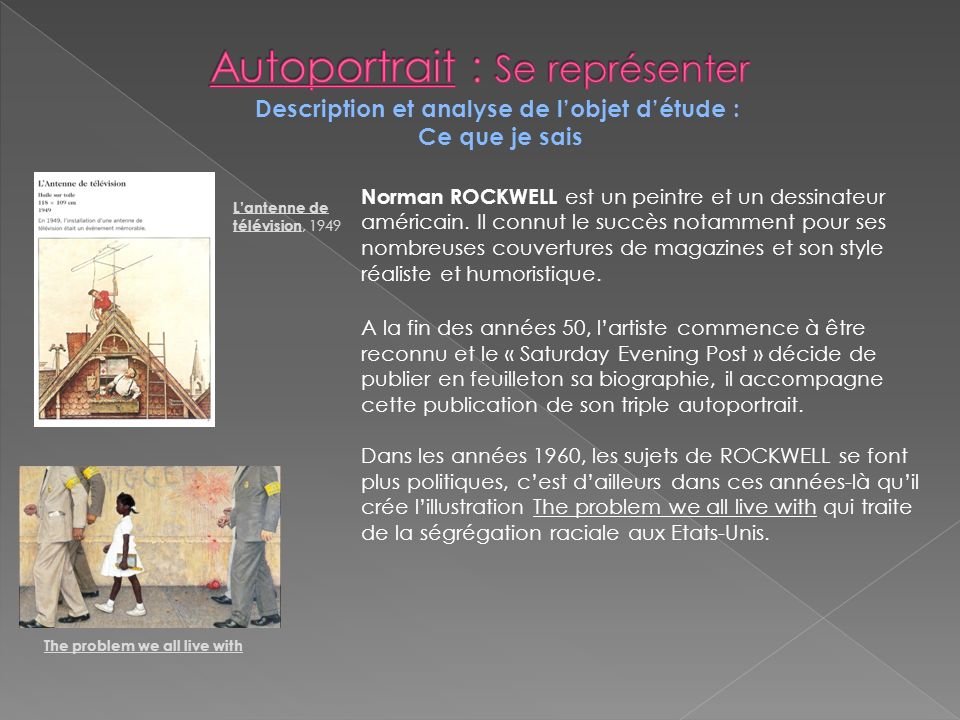The Problem We All Live With Analyse
The Problem We All Live With - Part One. Right now, all sorts of people are trying to rethink and reinvent education, to get poor minority kids performing as well as white kids. But there's one thing nobody tries anymore, despite lots of evidence that it works: desegregation. Nikole Hannah-Jones looks at a district that, not long ago, accidentally launched a desegregation program.
If you weren't around in the late 50s-early 60s, it may be difficult to imagine just how contentious was the issue of. A great many people were violently opposed to it, and hateful, shameful things were said and done. There was an angry mob gathered outside of Frantz Elementary on November 14. Sadly, it wasn't a mob of malcontents or the dregs of society - it was a mob of well-dressed, upstanding, housewives, shouting such awful obscenities that audio from the scene had to be masked in television coverage. In 1963 Norman Rockwell ended his long relationship with The Saturday Evening Post and began working with its competitor, LOOK. He approached Allen Hurlburt, the Art Director at LOOK, with an idea for a painting of (as Hurlburt wrote) '.
The Negro child and the marshals.' Hurlburt was all for it, and told Rockwell it would merit '. A complete spread with a on all four sides. The trim size of this space is 21 inches wide by 13 1/4 inches high.' Additionally, Hurlburt mentioned that he needed the painting by November 10th in order to run it in an early January 1964 issue.

The Problem We All Live With Analyse Pdf


Some previous Rockwell fans were disgusted and thought the painter had taken leave of his senses. Others denounced his 'liberal' ways using derogatory language. Many readers squirmed; as previously mentioned, this was not the Norman Rockwell they had come to expect. However, the majority of LOOK subscribers—after they had gotten over their initial shock—began to give integration more serious thought than they had before. If the issue bothered Norman Rockwell so much that he was willing to take a risk, surely it deserved their closer scrutiny. Now, nearly 50 years later, it is easier to gauge the importance of The Problem We All Live With when it first appeared in 1964.
Analyse Du Tableau The Problem We All Live With En Anglais
Every school in the United States is integrated, at least by law if not in fact. Although headway has been made, we have yet to become a colorblind society. There are still racists among us, much as we may wish they weren't. Fifty years, half a century, and still the fight for equality continues. In light of this, Norman Rockwell's The Problem We All Live With stands out as a more courageous and prescient statement than we originally supposed.